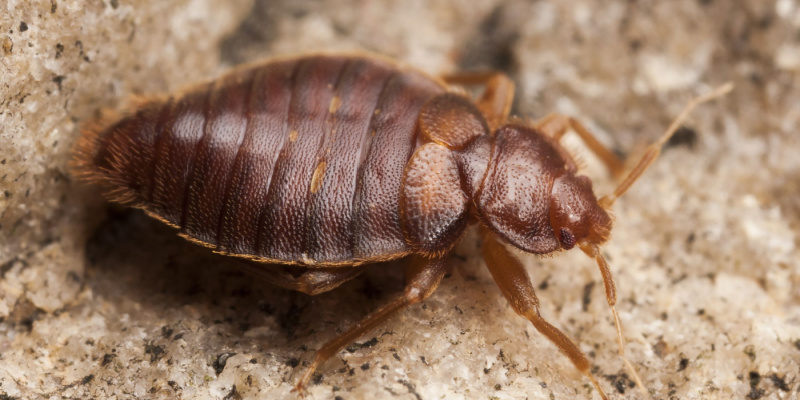Exploring the Scientific Research Behind Bed Bug Warmth Treatments as a Sustainable Bug Management Approach
In the realm of parasite management, the pursuit for sustainable and reliable solutions stays a consistent quest. One such approach that has gotten traction in recent years is making use of heat therapies to combat bed insect problems. By utilizing the scientific research behind thermal death points for these consistent pests, warm therapies offer an appealing choice to traditional chemical-based methods. The details of how warm properly eliminates bed bugs and the wider effects for lasting insect administration techniques make this a subject worth exploring even more.
Bed Pest Warmth Treatment Process

Thermal Death Factor for Bed Bugs
Revealing bed insects to raised temperatures beyond their thermal tolerance variety is essential for attaining effective obliteration in heat therapy procedures. The thermal death factor for bed bugs refers to the temperature level at which these insects can not endure. Research suggests that bed pests start to perish when revealed to temperatures above 113 ° F(45 ° C) for a continual duration. As the temperature boosts, so does the mortality price of bed insects. At around 118 ° F(48 ° C ), bed insects begin to die rapidly, with a death price of nearly 99% within mins of direct exposure. This shows the sensitivity of bed insects to heats and highlights the efficiency of warm treatments in getting rid of infestations. By reaching and keeping temperature levels above the thermal death point for bed insects, parasite management professionals can make sure thorough elimination of bed bug populations, including hard-to-reach locations where chemical therapies might be much less effective. Comprehending the thermal death factor for bed insects is essential for executing successful warm therapy approaches and attaining lasting pest management results.
Advantages of Heat Treatments
Having developed the vital thermal death point for bed pests, it is critical to now discover the considerable advantages that warmth therapies supply in successfully getting rid of these resilient insects. When compared to typical chemical methods, warm therapies existing numerous crucial advantages. Among the primary benefits is that warm can pass through deep into crevices and cracks where bed bugs conceal, making certain that even one of the most hard-to-reach locations are heated up to dangerous temperature levels. This thorough technique not just kills live pests but additionally targets bed pest eggs, avoiding future infestations.
Moreover, warm therapies are ecologically pleasant and safe, making them a sustainable pest monitoring method. Unlike chemical pesticides, warm treatments do not leave hazardous residues that can position risks to human wellness or the atmosphere. This facet is particularly vital in sensitive environments such as healthcare facilities, institutions, and domestic locations where chemical use may not be preferable.
In addition, warmth therapies have a high success price in getting rid of bed insect invasions in a single treatment, decreasing the requirement for multiple check outs and reducing check my source disruption to passengers. This efficiency not only conserves time and cash yet likewise offers assurance to those handling bed bug troubles.
Performance of Warm Treatment

Research researches have constantly demonstrated the effectiveness of warmth treatments in attaining a high rate of bed pest mortality. Effectively carried out warmth treatments can get to all the fractures and holes where bed bugs might be nurturing, making sure an extensive strategy to extermination. Heat treatments have actually the included benefit of eliminating bed pest eggs, which are frequently immune to typical chemical treatments. In general, the performance of heat treatments in removing bed pest infestations makes them a lasting and dependable bug monitoring strategy.
Lasting Parasite Monitoring Benefits
Implementing sustainable pest management practices supplies lasting advantages for both the atmosphere and public wellness. By using methods such as heat therapies for bug control, we can decrease the reliance on unsafe chemical pesticides that can have damaging impacts on environments and human health - exterminator near me. Sustainable bug administration strategies aid in protecting biodiversity by targeting specific parasites without hurting non-target organisms, consequently maintaining a well balanced environment
Additionally, lasting insect monitoring methods add to the overall health and health of the public. By decreasing exposure to poisonous chemicals used in standard bug control approaches, warm therapies provide a much safer alternative for bug monitoring in domestic, business, and public spaces. This reduction in chemical use also assists in protecting against pesticide residues from infecting water, soil, and air, protecting environmental high quality.
Verdict
To conclude, bed insect warmth treatments have been revealed to be a reliable and sustainable bug monitoring technique. The thermal death factor for bed pests makes them at risk to heat treatments, which have many benefits over typical chemical therapies. The effectiveness of heat treatments in getting rid of bed pest problems while minimizing environmental effect highlights the possibility of this approach as a lasting solution for pest control.
The bed bug heat therapy procedure includes elevating the temperature level within ravaged locations to a degree that effectively eliminates bed bugs and their eggs. By reaching and maintaining temperatures above the thermal death point for bed insects, bug administration specialists can make certain thorough removal of bed pest populaces, consisting of hard-to-reach locations where chemical treatments may be less effective. One of the key benefits is that warmth can permeate deep right into splits and holes where bed pests hide, guaranteeing that even the most hard-to-reach areas are warmed to dangerous temperature visit this web-site levels. Unlike chemical therapies that may leave behind resistant populations, warmth therapies use a safe and ecologically friendly option that can permeate deep into furniture, walls, and other hard-to-reach locations where bed pests conceal.
The thermal death point for bed pests makes them at risk to warmth therapies, which have many advantages over traditional chemical therapies.